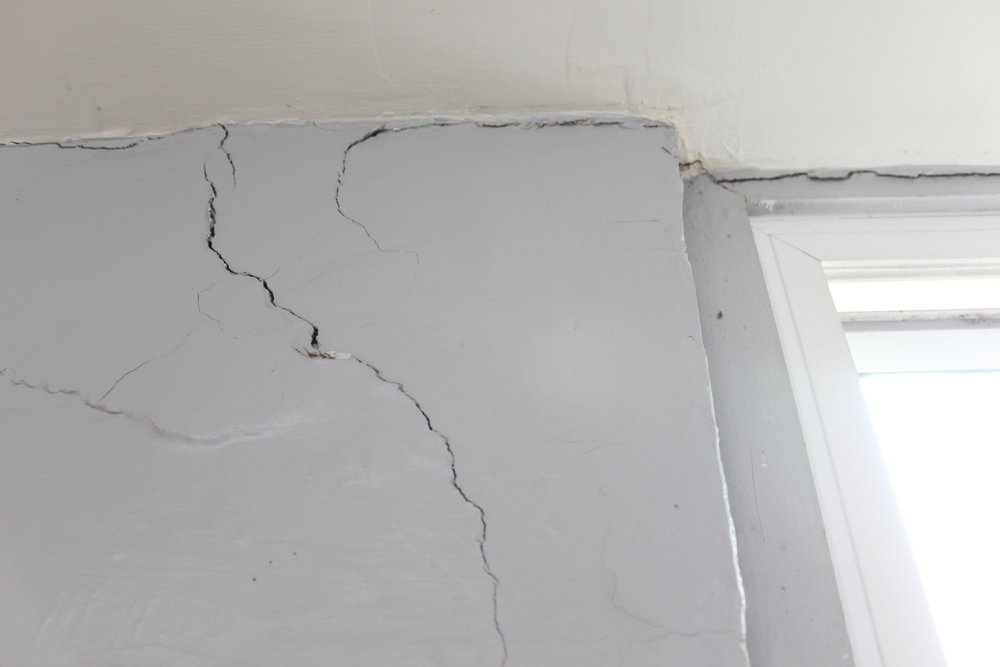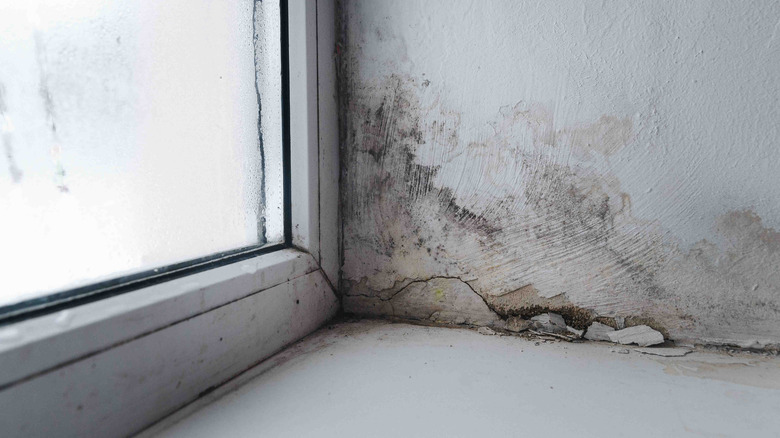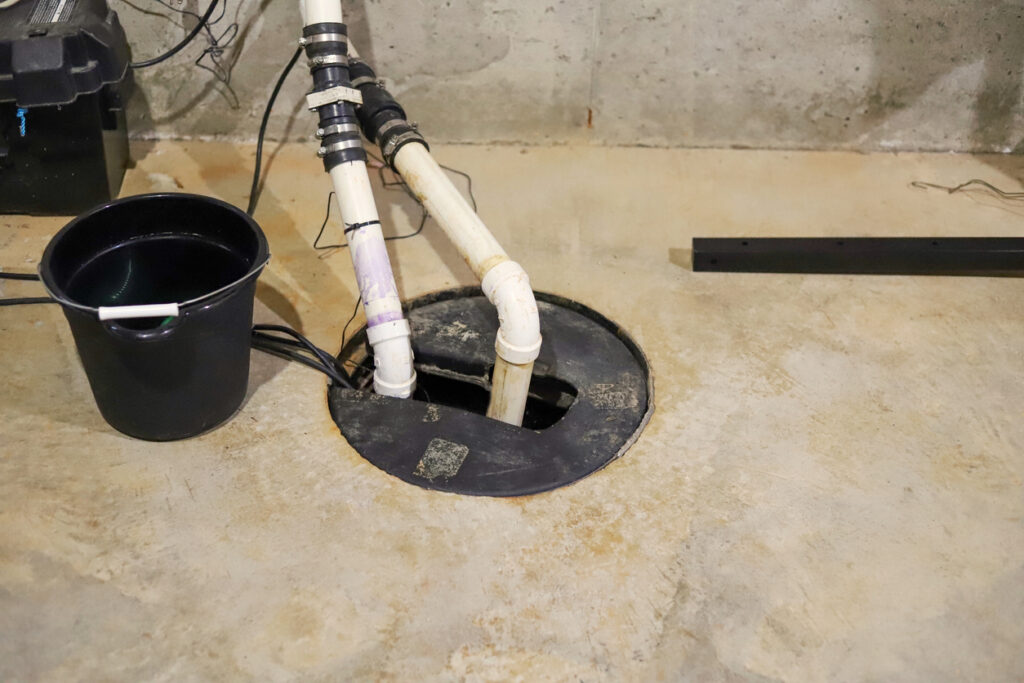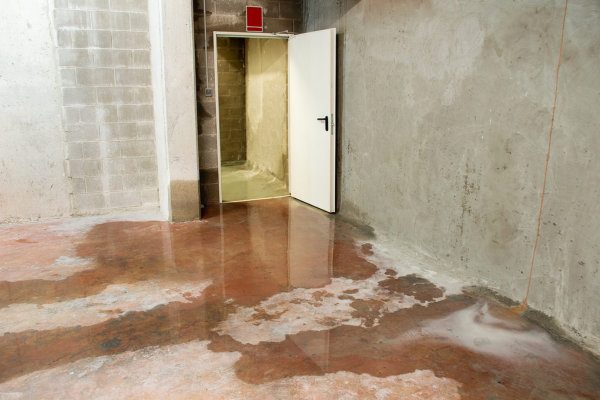1. Recognizing the Signs of Water Damage in Basements
Water damage is one of the most common concerns that homeowners have with their basements. Because of their location, basements are much more prone to moisture intrusions from leaking pipes, poor drainage, and cracks within the foundation of a home. If water intrusion occurs in these areas and is left unattended, the result can be mold growth, structural damage, and costly repairs. It’s crucial that early signs of water damage in the basement become identified to hinder these long-term effects. If one is alert, then action can be taken/implemented before the situation aggravates, which saves a great deal of time and money.
2. What Causes Water Damage in Basements? Signs of Water Damage in Your Basement
A few possible causes of water damage in any basement are considered here to emphasize how their prevention can be imperative to avoid long-term damages:
- Pipes Leaking: There could be minor cracks or wears in plumbing due to which generally undetected water leakages take place.
- Poor Drainage: Poor drainage systems around the basement allow water to build up at the base and thus creep into the basement. Problem with the Foundation: When cracks appear in the foundation, they may serve as an avenue through which water can penetrate inside, especially in cases of rainfall.
Types of Basements That Are More Susceptible to Water Damage
Water-related problems do not affect all types of basements equally. Certain types of basements are more susceptible to moisture problems due to their location, structure, and type of materials applied during construction. Being able to understand which types of basements are most prone to water damage is a helpful first step toward motivating a homeowner to take necessary precautions.
- Below-grade basement construction completely lies below grade and is, therefore, more susceptible to water seepage originating from the surrounding soil and groundwater. Cracks in the foundation or poor drainage create substantial water damage.
- A walk-out basement is like a partial basement except it has one or more sides that open to the outside. However, it will be vulnerable to water damage if the grading around a foundation slopes towards a house.
- Basements of Stone and Brick Foundation Houses with stone or brick foundations are more porous in nature and are designed to lead to water seepage. Water moistures can pass through more easily compared to modern concrete foundation material.
Knowing what type of basement you have can mean that you can take better care in protecting it from water and take the necessary steps towards limiting your risk.
3. Signs of Basement Water Damage that are Important
1. Musty Smell
A musty smell may be one of the earliest signs showing up in your basement related to water damage. This smell may, in general, result from mold growth, which always prefers darker and moister places to survive. If mold growth is not treated then this could spread further and cause some health issues, such as allergies or respiration problems.
2. Mold or Mildew
Mold or mildew on the walls, floor, or ceiling is a surefire indication of excess moisture in your basement. Besides mold being unsightly, it can weaken structures and adversely develop an indoor air atmosphere. If mold is ignored, it causes extensive damage and increases remediation cost.
3. Stains on Walls or Floor
Waterline or rust stains are evidences of previous or potential water intrusion. Yellowish, brown stains testify that water has been retained for a while, and the source needs to be further investigated.
4. Peeling Paint or Wallpaper
When moisture breaks into a basement, it can cause paint to bubble or wallpaper to peel off the walls. This indicates that water has compromised interior surfaces and serves as a warning for further inspection to resolve possible underlying issues.
5. Efflorescence on Concrete
Efflorescence refers to the white powdery deposits that can show up on concrete surfaces. This is a result of water seeping through and depositing minerals on their way out. It certainly tends to be an indicator of the presence of water to show that something has to be done before the condition becomes worse.
6. Cracked Walls or Floor

These are cracks in the walls or floors of the basement due to water pressure from the outside of the basement. Small cracks may appear insignificant but could gradually increase, allowing more water to seep in as time goes by. This can worsen the problem.
7. Puddles or Standing Water
If puddles or some type of standing water is found in your basement, this means there’s a drainage problem or perhaps a leak in the pipes. Proper regular inspection will keep the water from getting worse and creating mold.
8. Higher Humidity Levels
Too much moisture in a room can lead to higher humidity levels, which once again create mold and damage to stored items. Monitor the level of humidity by using a humidity monitor in order to maintain a decent level of moisture, avoiding further complications.
9. Wet or Damp Insulation
If the insulation in your basement is damp or wet, then it cannot serve the purpose of keeping out moisture, which means the insulation is not good enough, or there is a leak somewhere. This, if nipped in the bud, will prevent larger structural issues.
10. Foundation Movement
Water washed away the dirt from around the foundation and caused a shift in the foundation or settling of it. This type of movement can lead to the serious cracks in your walls and floors, developing a grave scenario pertaining to structural integrity.
By pointing out these signs that water damage is occurring-or has occurred-in their basement, homeowners can take necessary steps to mitigate further damage and protect their homes.
4. Signs of Water Damage in Basement: Consequences of Ignoring Water Damage in Basements

Not taking the signs of water damage in your basements seriously can lead to expensive and dangerous aftereffects, which include but are not limited to the following:
1. Structural Damage
Long exposure to water degrades the foundation, walls, and floors of your house. Prolonged exposure to moisture causes wood to deteriorate, concrete to crack, and metals to oxidize. All this, in turn, further lowers the structural integrity of your home, which will make it more vulnerable to collapse or very costly repair processes. More or less, the water can weaken the basement’s support beams, which may eventually lead to the sagging or slopping of the floor.
2. Mold Growth
One of the serious results of neglecting water damage is the appearance of mold. Mold thrives in wet conditions and can grow at an incredible rate in basements, which are consistently dark and humid. In addition to the deterioration of the building material they grow on, mold also presents some serious health risks. When people are exposed to mold spores, it can trigger allergic reactions, respiratory issues, and asthma attacks. The toxic ones, such as black mold, need professional remediation and further increase the costs.
3. Health Risks
Where mold occurs, stagnant water carries bacteria and other microbiota, which increase the chances of respiratory infections and other sicknesses. The indoor air quality is also deteriorated, since mold spores or mildew could be present in the air. It is very possible that it may cause long-term health complications among the occupants. The more there is of prolonging dampness, the greater there is going to be aggravation in cases like asthma and other allergic ailments, especially in children and aged individuals.
4. Higher Cost of Repair
The longer the water damage is not fixed, the more repairs cost. What could have been a minor issue, such as a crack or small leak, becomes major structural damage, mold infestation everywhere, and destruction of personal items. In extreme conditions, it may even call for the renovation of the complete basement or even the foundation. The amount it costs to fix major water damage far surpasses the cost of early detection and intervention.
5. Electrical Hazards
Water and electricity do not go well together at all. If water reaches the basement and comes into contact with electrical outlets or wiring, it can make for real danger, including electrical shock and even fire. Over time, exposure to moisture can actually corrode electrical systems, which is very costly to repair or replace.
6. Personal Belongings Damaged
The basement serves as a storing area, where most of the valuable items like furniture, documents, and electronic gadgets get destroyed by water. Such items are almost irrecoverable after being exposed to moisture for long, making the entire impact of the water damage at their residence costlier and more painful financially and emotionally.
7. Reduced Property Value
Water-damaged homes and those with a history of basement floods are generally valued at a lower percentage. Homes with more overt water damage or mold growing in the home would be considered a liability to potential buyers and a property that could realistically not sell for higher market value.
Ignoring water damage only opens the door to a host of problems that can very well undermine safety, both for the structure of your home and for your health. This is where early detection and professional intervention become quite necessary. Contact Tri-State Ready Restoration today to ensure timely inspections and repairs against water damage at an affordable cost.
Temporary vs. Long-Term Solutions for Basement Water Damage
When dealing with basement water damage, it’s important to understand the difference between temporary fixes and long-term solutions. Both have their place, but relying too heavily on temporary solutions can lead to bigger problems down the road.
Temporary Fixes:
- Dehumidifiers: A dehumidifier can help reduce humidity levels in your basement temporarily, but it won’t solve the underlying problem causing the moisture.
- Sealant for Small Cracks: Using a waterproof sealant can be a quick fix for minor cracks in the foundation, but it’s not a permanent solution if the cracks are caused by more significant structural issues.
- Towel-Drying: Wiping up small puddles of water may help in the short term, but it won’t stop the source of the water intrusion.
Long-Term Solutions:
- Foundation Repairs: If there are cracks in your foundation, professional repairs are necessary to prevent further water intrusion and maintain the structural integrity of your home.
- Sump Pump Installation: A sump pump can provide long-term protection against flooding by automatically removing water from the basement.
- Exterior Drainage Improvements: Improving your home’s exterior drainage system by installing French drains or ensuring proper grading around the foundation can prevent water from entering your basement in the first place.
Temporary solutions may work in an emergency, but long-term fixes are crucial for protecting your home from severe water damage and the high costs of repairs.
5. Signs of Water Damage in Basement: How to Avoid Water Damage in Your Basement
Preventing water damage in your basement requires some serious proactive steps in protecting your home from intrusion brought about by moisture. Here are some steps in great detail to help safeguard your basement:
1. Ensure Proper Drainage Systems
Gutters and downspouts are designed to route water away from your foundation. Ensure that they are clean of debris and pulled away from your house by at least 5-10 feet. Poor drainage results in its collection around the foundation; this will crack and cause leakage.
2. Installation of Sump Pump

A dry basement, especially after a downpour of rain, requires a sump pump. A good sump pump automatically pumps out the excess water to prevent flooding of the basement. A backup system with batteries would be great, too, just in case the power goes out.
3. Seal Leaks Around Foundation and Walls
Cracks in your foundation or basement walls are an invitation for water to seep into your home. Regularly survey your basement for any visible cracks and a systematic way to use a waterproof sealant to repair them. Professional help may be necessary in the case of larger cracks to ensure the work is done appropriately.
4. Waterproof Your Basement
Apply a waterproof coating or membrane to the walls and floors of your basement. A waterproof coating is essentially that extra layer applied to resist water through porous surfaces, such as concrete.
5. Maintain Proper Grading Around Your Home
Ensure the ground around your home slopes away from the foundation. Poor grading can cause water to collect near your foundation, which will lead to a possibility of water damage. A minimum slope of 6 inches over the first 10 feet from your house is recommended.
6. Check and Maintain Your Plumbing
Regularly inspect your pipes for leaks or other types of damage, especially the ones passing through your basement. During cold weather, this can make pipes freeze and burst, thereby causing water damage in your home. Insulate open pipes to keep them from freezing and fix any leaks as soon as possible.
7. Install a Dehumidifier
A dehumidifier can help keep humidity in check inside your basement, especially during the warmer months. Keeping humidity below 50% reduces the chances of mold growth and building up dampness.
8. Regularly Test Your Sump Pump
Keep your sump pump in good, working order through regular testing. Water should be poured into the sump pit to turn the pump on and discover if it efficiently clears water from the pit. Regular maintenance and testing of the sump pump will let you know your pump will be ready when you need it.
9. Install Window Well Covers
If you have basement windows, cover the window wells. The covers will keep rainwater from collecting and seeping through. Window well covers are relatively inexpensive and very effective, keeping debris and moisture out.
10. Check and Clean Your French Drains
French drains are specifically designed to redirect water away from your home’s foundation. Ensure that they are free of clogs because any accumulation of debris may cause water to fail to drain properly, which can result in a flooded basement.
These would help you avoid water leakage inside your basement quite easily, by incorporating these preventative measures. Professional Help: To have your required help regarding waterproofing and prevention of water leakage, go to our Water Damage Services.
6. Actions to Take When You Suspect Water Damage in Your Basement
Suspecting water damage in your basement means you should go through this list and take immediate action. The steps would include:
- Visible signs of damage: You would look for musty odors, mold, peeling paint, and cracks in the walls or floors.
Humidity Levels: Use a humidity meter to check moisture levels.
- Identification of Water Source: Identify whether the water source is due to plumbing leaks, poor drainage, or foundation cracks.
- Call Professionals: If one cannot trace it, or the destruction is vast then it is time to call in the professionals immediately .
Conclusion
Early detection of the signs of water damage in your basement saves you from costly repairs that may include long-term structural damages. Faster action will reduce the chances of mold growth, among other health risks. Professional remediation means a solution to your problem entirely, returning your home to its safe and integrity state. Tri-State Ready Restoration is here to help you protect your home from further water damage. Contact us today!
FAQS: Sings of Water Damage in Basement
How do I know if there is major water damage in my basement?
Anything like consistent mold, standing water, cracks in the walls, or efflorescence would mean the water damage is serious and thus requires immediate attention.
Can water damage in my basement affect the foundation of my house?
Yes, a long-term presence of water can weaken the foundation, structural damage being inevitable; hence, perhaps costly repairs would be required.
Does homeowners insurance cover basement water damage?
It depends on your policy. In general damage from sudden events, like burst pipes is usually covered but damage from long-term neglect or flood usually requires additional coverages.
What type of professionals should I employ for basement water damage?
You want to employ a licensed water restoration company like Tri-State Ready Restoration immediately to inspect and repair the damages.
How often should I check my basement for water damage?
Take time to inspect your basement every few months and after heavy rainstorms to catch any early signs of water damage before they escalate.

